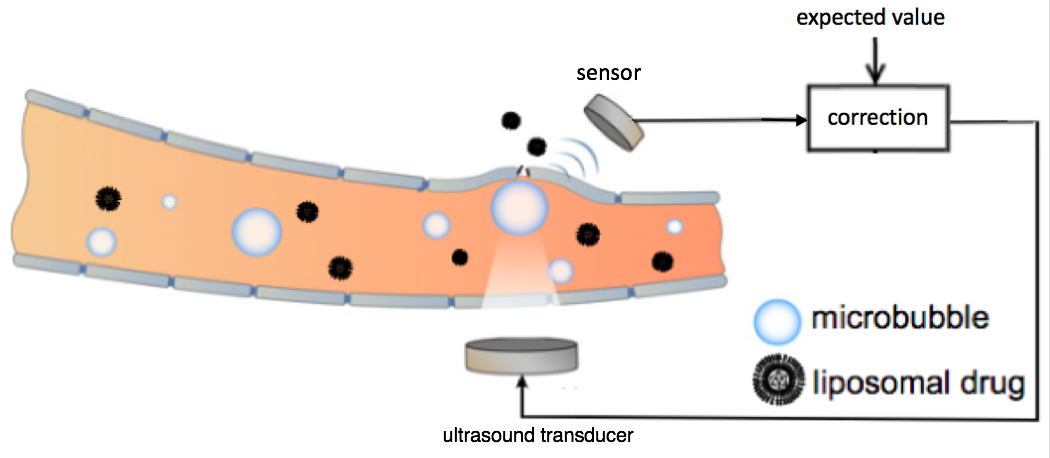Tao Sun, Nathan McDannold, Eric Miller and Brigham & Women’s and Tufts colleagues have developed a controller that offers a finer degree of control in penetrating the blood brain barrier for drug delivery. The technology, only tested in rats, could improve safety in humans if found effective.
Using focused ultrasound and microbubbles as before, the team is now able to listen to echoes for instantaneous feedback on microbubble oscillation stability, providing fast, real-time control and analysis.
Microbubbles can help temporarily open the blood-brain barrier without incision or radiation, but can destabilize and collapse, damaging the brain’s critical vasculature.
The team used a rat model to develop a closed-loop controller. Sensors were placed on the outside of the brain, as microphones, enabling researchers to listen to ultrasound echoes bouncing off the microbubbles, to determine stability. They then tuned and adjusted the ultrasound input, instantly, to stabilize the bubbles, excite them to open the barrier, and deliver a drug of a predefined dose, while maintaining safe ultrasound exposure.
The approach was tested in healthy rats as well as an animal model of glioma brain cancer. Further research is needed to adapt the technique for humans. Clinical trials are now underway in Canada.
Join ApplySci at Wearable Tech + Digital Health + Neurotech Silicon Valley on February 26-27, 2018 at Stanford University. Speakers include: Vinod Khosla – Justin Sanchez – Brian Otis – Bryan Johnson – Zhenan Bao – Nathan Intrator – Carla Pugh – Jamshid Ghajar – Mark Kendall – Robert Greenberg – Darin Okuda – Jason Heikenfeld – Bob Knight – Phillip Alvelda – Paul Nuyujukian – Peter Fischer – Tony Chahine – Shahin Farshchi – Ambar Bhattacharyya – Adam D’Augelli
Registration rates increase November 24th, 2017
